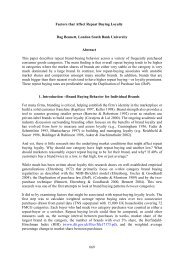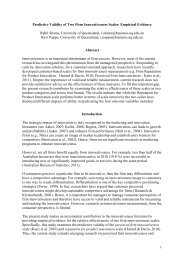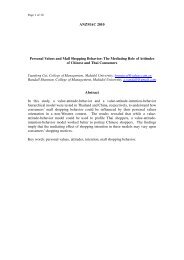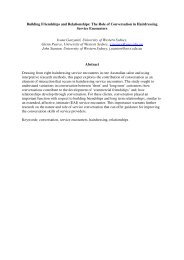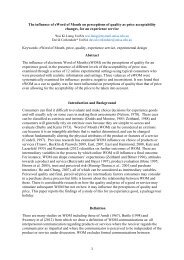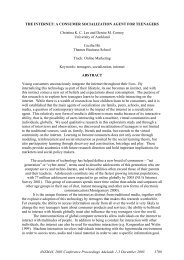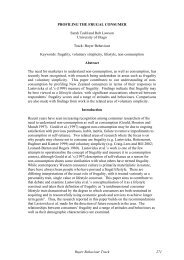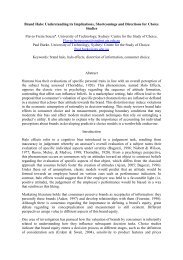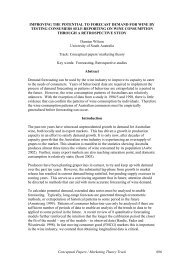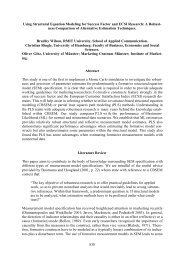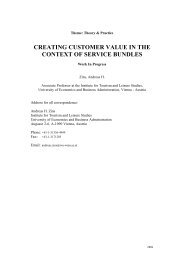A CONCEPTUAL MODEL OF TOURISM DESTINATION ...
A CONCEPTUAL MODEL OF TOURISM DESTINATION ...
A CONCEPTUAL MODEL OF TOURISM DESTINATION ...
You also want an ePaper? Increase the reach of your titles
YUMPU automatically turns print PDFs into web optimized ePapers that Google loves.
that go beyond the more passive visitation practices of the past’ (Crouch and Ritchie<br />
1999). The variety of the attractions and the mix of activities offer the tourist a wide<br />
choice and ultimately they stay longer. This leads to Proposition 1:<br />
P1. The destination’s mix of tourist activities and attractions is related to its<br />
attractiveness and competitiveness<br />
Supporting Facilities<br />
These are the facilities that exert a secondary effect on the motivation to travel eg.<br />
Accommodation transport infrastructure and services, energy etc. Facilities provide<br />
the foundation upon which a tourist industry is based (Crouch and Ritchie 1999). The<br />
attractiveness of a destination is enhanced by its ability to provide facilities that<br />
tourists can use at the destination. Competitiveness of a destination is achieved when<br />
the provision of services and facilities are competitive against alternative destinations.<br />
Tourism support services are varied and depend on the type of destination and the<br />
objectives of the Destination Management Organisation (DMO). The DMO<br />
contributes to the attractiveness and competitiveness of a destination through the<br />
strategic decisions like the type of destination they want to be the level and range of<br />
facilities that should be available and the regulation of operators. This leads to<br />
Proposition 2:<br />
P2. The range and level of destination supporting facilities and the management<br />
abilities of the DMO is associated with its attractiveness and competitiveness.<br />
Intrinsic destination resources &<br />
Mix of Activities<br />
Experience Environment:<br />
Physical and Social;<br />
Crowding, Safety and<br />
Security, Human<br />
resources, competition,<br />
Supporting Services: Venues,<br />
Accommodation, Transport, Energy<br />
cooperation<br />
Figure 1: The proposed conceptual model of TDCA<br />
Communication/Promotion<br />
Reputation, Branding,<br />
Pricing,<br />
Competitiveness<br />
Unique destination<br />
Brand<br />
Attractiveness<br />
Experience Environment<br />
The place in which the experience is enjoyed has been defined as the environment in<br />
which the service is assembled and the firm and customer interact (Baker et al. 1992).<br />
Both the physical and social environments are important for the acceptability and<br />
Destination image<br />
Tourist satisfaction<br />
Organisational<br />
performance<br />
Conceptual Papers / Marketing Theory Track 640



